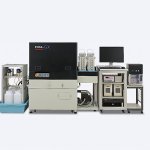
News • Drug discovery
New FDSS-GX: Hamamatsu presents high-performance kinetic plate imager
Hamamatsu Photonics announces the release of a new high-speed kinetic plate imager, the FDSS-GX, designed for kinetic cell-based assay development.

Hamamatsu Photonics announces the release of a new high-speed kinetic plate imager, the FDSS-GX, designed for kinetic cell-based assay development.

Researchers at the University of Sheffield have developed a new compound that is able to kill both gram-positive and gram-negative antibiotic-resistant bacteria.
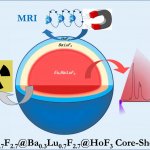
Researchers have designed a fluid that works like a luminous ink to obtain very sharp images of damaged tissues, organs and cartilages in diagnostic tests. This new compound, still in the laboratory phase, reduces adverse effects on the human body because it allows lower amounts to be injected and the dose to be targeted only at the affected area.
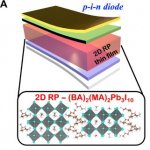
Hsinhan Tsai and a research team in materials, nanotechnology, nuclear engineering and X-ray science at the Los Alamos National Laboratory and the Argonne National Laboratory in the U.S. demonstrated a new thin film X-ray detector prototype.
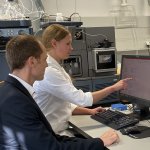
Due to the scientific and technical developments in recombinant DNA technology and protein engineering since the early 1980s, therapeutic proteins have emerged as one of the most important classes of new pharmaceuticals. Currently, more than 200 protein and peptide based drugs have gained approval by the USA’s Food and Drug Administration (FDA) and many more are under preclinical or clinical…

Being able to produce medicines cheaply and everywhere, with sunlight as an energy source. This reality is closer than ever now that chemists from Eindhoven University of Technology are presenting a "mini-reactor" that, similar to leaves in nature, absorbs sunlight and drives chemical reactions. As an ultimate demonstration, they succeeded in having the reactor actually produce two…

Pathfast hs-cTnI is a chemi-luminescent enzyme immunoassay (CLEIA) for the quantitative measurement of cardiac troponin I (cTnI) concentration in whole blood or plasma at the point-of-care (POC). Reagents are single use in all-in-one cartridges and up to six tests in parallel can be analysed,’ the manufacturer Mitsubishi reports. ‘Low concentrations of cTnI can be analysed by using high…
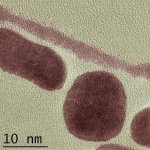
Scientists at the University of Birmingham are working with a Canadian tech company to investigate whether gold nanorods can be used to target cancer cells in the human body. They have joined experts at Sona Nanotech Inc. to develop the next generation of nanorods for tissue imaging. The team will work with its Canadian partners - beginning by creating luminescent nanorods by transforming gold…
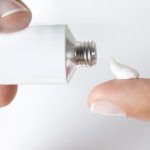
Nearly two-thirds of all cancer patients in the United States will undergo radiation therapy as part of their treatment, and as many as 90 percent of those patients will experience radiation dermatitis – a rash or burn on the skin. Topical treatments commonly such as silver sulfadiazine cream contain heavy metals. Therefore, patients have historically been advised to avoid using these…

A team of scientists at the Keck School of Medicine of USC is looking to some deep sea dwellers to create a better way to develop cancer-fighting therapies. Harnessing the power of the enzymes that give these marine animals the ability to glow, the team created a test that makes it easy for researchers to see whether a therapy is having its intended effect — killing cancer cells. The results of…

The group of Russian and French researchers, with the participation of scientists from the Lomonosov Moscow State University, has succeeded to synthesize nanoparticles of ultrapure silicon, which exhibited the property of efficient photoluminescence, i.e., secondary light emission after photoexcitation. These particles were able to easily penetrate into cancer cells and it allowed to use them as…

When it comes to fending off disease and helping prevent people from falling ill, the body’s immune system – armed with T-cells that help eliminate cancer cells, virus-infected cells and more – is second to none. But exactly how the immune system works remains, in many ways, a mystery, as there are numerous cell types whose functions and interactions with our immune systems have not been…

Scientists in the UK have designed a new self-assembling nanoparticle that targets tumours and could lead to quicker diagnosis of cancer. Researchers at Imperial College London report that a new self-assembling nanoparticle can adhere to cancer cells, thus making them visible in MRI scans and possibly eliminate the need for invasive tissue biopsies. Report: Mark Nicholls

PET scanners are not the only way to image radiotracers. Recent work developed around a phenomenon called Cerenkov luminescence aims to bring a new modality out of preclinical development and into clinical practice.

Statistically speaking every fourth older German man suffers from prostate cancer with the mortality rate being 60,000 patients annually
California, USA: 20,000 visitors and 700 manufacturers showing products in almost 2000 booths at the American Association for Clinical Chemistry (AACC) annual meeting (July 5-29, 2010) underlined the importance of this, the world’s largest gathering of clinical laboratory professionals.

Open MRI not only provides good clinical images for musculoskeletal diagnoses, but also makes it easier to accommodate big-bodied sportsmen.
USA — Miniscule gold 'nanorods' triggered by a laser beam can blast holes in tumour cell membranes, which then activates a complex biochemical mechanism that leads to the tumour cell to self-destruct, according to researchers at the Weldon School of Biomedical Engineering in Purdue University, Idaho.
Due to economic pressure, laboratories increasingly consolidate and automate procedures. Further cost reductions could come about through miniaturisation and multi-parameter tests.